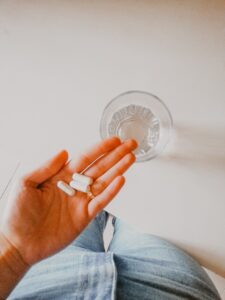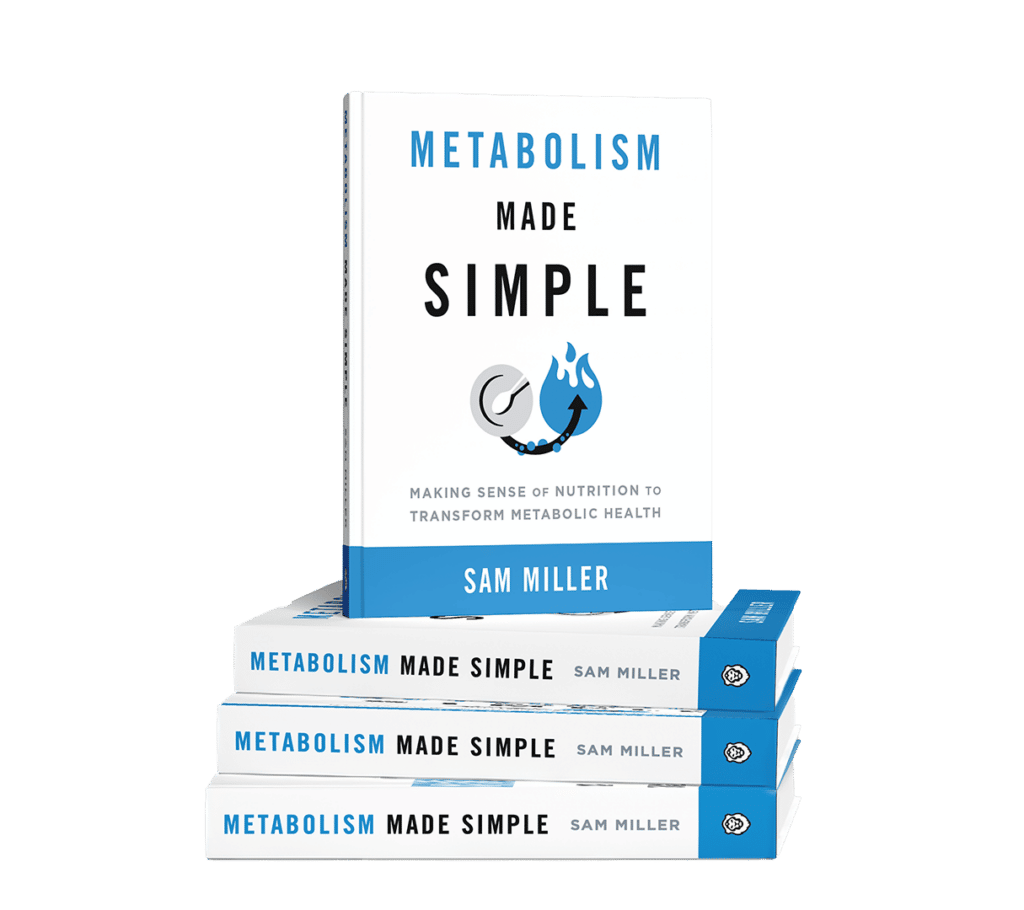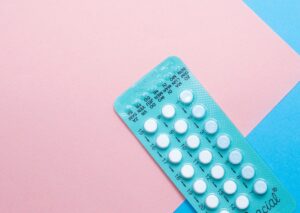ue
Introduction
It’s well known that the body’s hormonal milieu heavily influences how efficiently and effectively the body processes, utilizes, and stores macronutrients such as carbohydrates and fats and therefore affects performance, fat loss, and muscle building capabilities.
While many studies around performance and body composition are done in males and therefore recommendations based on that, males have a very simple daily hormonal rhythm.
Women, however, have a much more complex monthly cycle and with more general interest in women’s participation in sports of all kinds, more research has been done on how these hormonal fluctuations impact performance and the utilization of different macronutrients.
Although the field is still young, this new knowledge may be able to help show us optimal menstrual cycle nutrition according to each phase, as well as performance recommendations based on where one is in the monthly cycle in order to maximize health and fitness goal outcomes.
Who Can Benefit From Menstrual Cycle Nutrition and Training Syncing
Before we dive in, I’m really going to emphasize who this is and isn’t for, and to what degree we might expect benefits here. This is not suggested for beginners, clients with compliance issues, or those that still have a lot of lower hanging fruit.
If you or your client hasn’t mastered the foundations of being able to track accurately and compliantly, and there’s still a good bit of low hanging fruit in terms of lifestyle, don’t spend your time trying to maximize your nutrition and training for your menstrual cycle.
I would only do this in terms of training for someone that has been consistently training for at least 1 year; the type of person who’s already solidly seated in the fitness lifestyle.
I’ll repeat this in different terms: If your sleep isn’t a solid, quality 8 hours, you’re not managing your stress well, you’re still struggling with compliance around tracking or most of your diet isn’t whole foods, and there’s still a question around whether your general training program is optimal, then you’re putting the cart before the horse here.
It should also be noted that this is only applicable to naturally free-cycling women, meaning women on birth control, HRT, or postmenopausal women will not gain benefit from this.
If all of the above is locked in, then you have a license to be able to experiment here. Let’s first dive in with a primer on the menstrual cycle.
The Female Menstrual Cycle
The menstrual cycle is around a 28-32 day cycle for most women, and is in place to set up the body for pregnancy. The period, or menses, is day 1 of your follicular phase and therefore your cycle
FSH and LH are gonadotropins, which are basically messenger hormones from the brain that talk to the ovaries, telling them to do different things. In a simplified fashion, FSH causes an ovarian follicle to mature.
This follicle is what holds the egg which gets released to be fertilized. LH supports this, but also causes estradiol production as well, so as we see the follicular phase move on, estradiol is slowly rising. You can see in the image above that they’re at relatively similar levels throughout the course, except at ovulation.
The surge of LH at the midpoint of the cycle causes the release of the egg from the follicle; this follicle then becomes the corpus luteum, which is what produces progesterone.
In the image above, after the ovum is released (middle of the picture), the purple circle thats slowly shrinking on the right side of the image is the corpus luteum. As it shrinks, progesterone production goes down as well.
Meanwhile, as estradiol was rising, it was also stimulating endometrial tissue to grow and proliferate in order to get ready for the implantation of a fertilized egg.
The progesterone released in the luteal phase helps maintain this. Towards the end of the luteal phase, as both estradiol and progesterone drop, this triggers the shedding of the lining, which is menses, and the cycle begins all over again.
Changes in Metabolism Throughout the Menstrual Cycle
The main important differences in general metabolism between males and females exist in fat, carbohydrate, and protein utilization, thermoregulation, fatiguability, and soreness and recovery.
Whereas these things stay relatively static for men all other things equal, these things all have the potential to fluctuate for women throughout the menstrual cycle.
Substantial evidence suggests that estrogen is a master regulator of both body composition and bioenergetics, so the fluctuation of estradiol throughout the menstrual cycle has important implications for exercise capacity and nutrition.
Estradiol is the dominant hormone in the follicular phase, whereas in the luteal phase, as progesterone rises and begins to oppose estradiol, we get changes in macronutrient utilization, as well as changes in fatiguability, soreness, and recovery depending on the type of exercise.
Follicular Phase
Nutrition Summary: In the follicular phase, fat and protein oxidation go down as does glycogen storage, whereas carbohydrate utilization increases and women are a little more insulin sensitive. We’ll go more into depth about what this means below
Training Summary: We know that in the follicular phase, we’re more insulin sensitive and carbohydrate utilization goes up, and women tend to have better exercise recovery due to the hormonal milieu here as well. Estradiol has independent positive effects on hypertrophy, but testosterone and free testosterone tend to be higher in the follicular phase as well. Since anaerobic exercise such as weight lifting mainly uses carbohydrates for fuel, it may be a good idea to put the bulk of your resistance training within the follicular phase as opposed to the luteal phase. Studies have shown better hypertrophy results over time with this approach, which we’ll get into below. We’ll also get to examples of programming.
Luteal Phase
Nutrition Summary: During the luteal phase of the menstrual cycle when ovarian hormones peak, women exhibit heightened fat oxidation at rest, as indicated by decreased respiratory exchange ratio (RER), and 2.5–11.5% higher resting energy expenditure (REE).
The luteal phase comes with mild insulin resistance, as shown by the decreased carbohydrate utilization. Women also exhibit greater protein oxidation at rest (meaning potential muscle breakdown if low calorie and protein isn’t adequate), and may also experience increased appetite as a function of both hormones and increased energy expenditure.
Training Summary: Studies show better performance with aerobic exercise during the luteal phase, but not as much of a hypertrophy response to strength training. If we consider the changes in macronutrient utilization, this makes sense considering aerobic exercise is better fueled by fat as opposed to carbohydrates.
Recovery from lifting is also slightly dampened during the luteal phase. The greater core body temperature during the luteal phase also decreases the body’s ability to thermoregulate or cool down, so this can hamper performance and has implications for increased sweating and hydration.
Exercise – Performance and Adaptations Across the Menstrual Cycle with Nutrition Implications
Aerobic exercise
Aerobic exercise can be well fueled by fat as noted above, and the hormonal shifts in the luteal phase spare glycogen and promote fat oxidation. Therefore in theory, women may have better endurance or distance performance within the luteal phase of the menstrual cycle.
A study that tested this, tested time to exhaustion with a very submaximal run for women in both their follicular and luteal phases, and during the luteal phase they had a 10% longer time to exhaustion. From a performance application standpoint, 10% may not sound like much, but going an extra 10% distance before bonking is pretty huge and could mean the difference between first and last place.
Conversely, a different study tested time trial performance over 120 minutes at 70% VO2max. This is a more intense run that would be crossing the threshold into carbohydrate utilization. Women did 13% better during the follicular phase, indicating more intense endurance exercise may be better performed during the follicular phase due to better glucose utilization.
Taken together, endurance exercise performance is affected by substrate utilization, and longer distance, less intense endurance exercises may favor the luteal phase because of increased fat oxidation, whereas more intense races that cross glycolytic thresholds may be more beneficially done in the follicular phase.
Translating this to nutritional recommendations, it may be physiologically advantageous to mildly decrease carbohydrate intake and increase fat intake during the luteal phase, whereas we may lower fat intake and increase carbohydrate intake during the follicular phase.
Strength and Power
Studies show strength and power are probably not directly affected by hormonal shifts in either the luteal or follicular phase. However, muscle building capability and adaptation may be greater if more strength training is done in the follicular phase. Many studies out there show conflicting results with max strength, but the consensus is max strength does not change across the cycle.
Study 1: One study tested half-squat 1 repetition maximum (1RM) in resistance-trained women during their early follicular, late follicular, and mid-luteal phases. The researchers measured force production, velocity, and power at loads equivalent to 20, 40, 60, and 80% of their 1RM and found similar results across all three menstrual phases. This basically means that if you have a powerlifting, weightlifting, or similar competition coming up, theres no need to attempt to plan it during your follicular or luteal phase.
Study 2: Let’s speak to the increased hypertrophy. In one study, women underwent a leg strength training routine across 3 menstrual cycles, testing out follicular training vs. luteal training. One leg was for follicular training, and the other leg was for luteal training.
The training was “single-leg press at 3 sets of 8-10 repetitions to exhaustion” which I’m assuming meant failure. During the follicular training, one leg performed 8 training sessions during the follicular phase and 2 training sessions during the luteal phase.
It was the opposite for luteal training; 8 training sessions for the other leg during luteal phase and 2 sessions during follicular phase. Testosterone and free testosterone tended to be higher in the follicular phase.
At the end of the study, the increase in max force production and increase in muscle size was significantly greater for the follicular training than the luteal training.
Fatigue and Exercise Recovery
Women in general are less prone to fatigue during exercise and can handle higher training volumes in both endurance and resistance training. There’s many factors going into this, but one of the contributing factors is the fact that women have a higher proportion of type I muscle fibers when compared to men, which are less fatigable in general.
You might be surprised to hear that recovery seems to be better in the luteal phase than follicular phase. How do we reconcile that fact with the fact that we make more hypertrophy gains if we lift more during the follicular phase? There’s a little bit of nuance here.
For example, a study of women who ran for 90 minutes at 70% VO2max at both points in the menstrual cycle found higher markers of muscle damage (creatine kinase) and inflammation (IL-6, an inflammatory cytokine) during the follicular phase. The authors of the study concluded that exercise recovery is hampered during the follicular phase.
Let’s break down the nuance here. We know that inflammation is necessary for adaptations to occur; meaning we need that inflammatory response to make gains. For example, going into an ice bath after lifting has been shown to decrease markers of inflammation and muscle damage, but its also been shown to decrease hypertrophy adaptations over time.
You might consider the luteal phase like the ice bath. We’re not getting quite as much muscle damage or inflammation in response to training, but we are also probably not getting as much adaptation to the stimulus either.
If we look at the data as a whole, knowing that acute inflammation is necessary for adaptations, and knowing that perhaps muscle damage has some role in adaptation (not a main driver), it would make sense why the strength training study saw more gains during the follicular training phase. They may have been experiencing higher degrees of those markers, but they were obviously able to recover given the results of the study.
Thermoregulation
An increased core temperature, greater strain on the heart during submaximal exercise, and an increased sweating threshold generally occurs during the luteal phase. As a coach or practitioner, asking your clients if they’re experiencing increased sweating during the luteal phase may be a good idea, and if this is the case, increasing hydration during the luteal phase may also be prudent.
Summary
To sum it up, for slow-paced endurance exercise, we have increased time to exhaustion during the luteal phase along with better fat oxidation. For higher intensity endurance exercise, this may be better performed in the follicular phase. This data points to better performance of longer distance, submaximal running during the luteal phase. Faster races, runs, or events may still be better during the follicular phase.
For strength training, current strength performance appears to remain static across the menstrual cycle, however, strength and hypertrophy adaptations appear to be better if more adaptations are driven during the follicular phase (I.e. more resistance training done during the follicular phase).
Real World Application
As another reminder, if the client is anyone but a free-cycling woman (i.e someone on birth control, someone on HRT, someone postmenopausal), this information does not apply.
How much this matters and its application entirely depends on the goals of the client. It would matter most in someone that does a lot of cross training and wants to be better at both strength/hypertrophy pursuits as well as endurance pursuits.
For this demographic, it may be beneficial to train more intensely on the endurance during the luteal phase and back off intensity/frequency/volume of strength training, with the opposite holding true during the follicular phase.
If someone is only interested in hypertrophy, strength training, or physique results, then it may be worth experimenting with going slightly higher on the intensity/frequency/volume with strength training during the follicular phase, and backing off slightly during the luteal phase.
In practice, if it was my client, I personally wouldn’t make huge differences at first just to test the waters. Maybe 2-3 more hard sets per muscle group per week and hitting RPE’s 1 point above what you’d normally do all around the board. Again, as a coach, I would view this as an experiment, maybe do it for 3-4 months, and keep track of biofeedback and progress along the way to make sure it’s actually making a difference. If you notice your client simply doesn’t have the energy for the more intense workouts during the follicular phase, obviously adjust.
If someone is purely interested in aerobic and endurance training, it appears that scheduling longer training runs and longer distance endurance training during the luteal phase might be beneficial.
Real World Programming Tested
Let’s take a look at another study that was actually programmed for the menstrual cycle; the diagram can be found below.
What we’re looking at here is that women in the follicular phase training group performed anywhere from 6-10 lifting sessions during the follicular phase and 2-4 during the luteal phase, whereas the opposite was true in the luteal phase training group.
As you can see in the bottom of the diagram, both leg muscle strength gains and muscle size increased significantly more for the follicular training group than the luteal training group.
This would translate to lifting up to 5x/week during the follicular phase (2 weeks total), and switching to 2 full body training sessions during the luteal phase.
Client Avatar Examples
Female Pursuing Aesthetics and Strength
Consider the performance modifications I recommended earlier (scheduling slightly more intensity/frequency/volume during the follicular phase and less during the luteal phase), and along with that we might utilize a lower fat and higher carbohydrate approach during the follicular phase, with more carbohydrate pre- and intra-workout than post workout (although that isn’t to say ignore the post-workout carbohydrate). This is because glycogen storage is hampered in the follicular phase; whereas the opposite may hold true in the luteal phase.
Female Endurance Athlete
It might be beneficial to raise the percentage of calories from fat and lower them from carbohydrate during the luteal phase, especially if endurance performance is a priority. In practice, if they weren’t a fat-adapted endurance athlete, this would probably only look like starting out minor changes in percentages between the two, and if you wanted to experiment doing slightly more drastic changes in percentages after that, you could.
As we spoke about before as well, it could be beneficial to schedule a larger proportion of longer, less intense runs during the luteal phase and a larger proportion of faster, more moderate intensity runs or tempo runs during the follicular phase. As far as carbohydrate timing, more pre-exercise carbohydrate may be necessary during the follicular phase since glycogen storage is down and carb utilization is up.
During the luteal phase, it may be beneficial to have slightly more carbohydrates in the post-workout period than pre- in order to take advantage of the insulin sensitizing effects of exercise and the ability to store more glycogen in general in the luteal phase.
We Don’t Live in a Vacuum – IMPORTANT
This is all advice that would be perfect within a vacuum, but we know theres many other variables that can influence compliance and progress. Meaning, that if you apply this information with your client and they’re struggling to comply, then compliance takes priority, so modify.
For example, appetite and cravings may be increased during the luteal phase because of the hormonal milieu, so the advice of decreasing carbohydrate a bit and increasing fat may be tough here due to cravings. If that happens, and the client is going off the rails because of a mark they’re struggling to hit, then modify.
If the client has more fatigue in the follicular phase for whatever reason, perhaps due to a hormonal imbalance or gut issues or whatnot, then we don’t really have a good foundation on which to base the increased training volume during the follicular phase. In theory, yes, we can gain benefit from programming more lifting during the follicular phase, but in practice, if your client is struggling with fatigue during the period and a little after, then the underlying issue there should be dealt with first.
The moral of the story is compliance and having a lifestyle you can adhere to comes first.
References
- Kissow J, Jacobsen KJ, Gunnarsson TP, Jessen S, Hostrup M. Effects of Follicular and Luteal Phase-Based Menstrual Cycle Resistance Training on Muscle Strength and Mass. Sports Med. 2022 Apr 26. doi: 10.1007/s40279-022-01679-y. Epub ahead of print. PMID: 35471634.
- Wohlgemuth, K.J., Arieta, L.R., Brewer, G.J. et al. Sex differences and considerations for female specific nutritional strategies: a narrative review. J Int Soc Sports Nutr 18, 27 (2021). https://doi.org/10.1186/s12970-021-00422-8
- Hackney AC, Kallman AL, Ağgön E. Female sex hormones and the recovery from exercise: Menstrual cycle phase affects responses. Biomed Hum Kinet. 2019 Jan;11(1):87-89. doi: 10.2478/bhk-2019-0011. Epub 2019 May 24. PMID: 31179123;
- Ansdell P, Thomas K, Hicks KM, Hunter SK, Howatson G, Goodall S. Physiological sex differences affect the integrative response to exercise: acute and chronic implications. Exp Physiol. 2020 Dec;105(12):2007-2021. doi: 10.1113/EP088548. Epub 2020 Oct 17. PMID: 33002256.
- Sung E, Han A, Hinrichs T, Vorgerd M, Manchado C, Platen P. Effects of follicular versus luteal phase-based strength training in young women. Springerplus. 2014 Nov 11;3:668. doi: 10.1186/2193-1801-3-668. PMID: 25485203; PMCID: PMC4236309.
- Edwina H. Yeung, Cuilin Zhang, Sunni L. Mumford, Aijun Ye, Maurizio Trevisan, Liwei Chen, Richard W. Browne, Jean Wactawski-Wende, Enrique F. Schisterman, Longitudinal Study of Insulin Resistance and Sex Hormones over the Menstrual Cycle: The BioCycle Study, The Journal of Clinical Endocrinology & Metabolism, Volume 95, Issue 12, 1 December 2010, Pages 5435–5442, https://doi.org/10.1210/jc.2010-0702
- J. Lynne Walker, George J. F. Heigenhauser, Eric Hultman, and Lawrence L. Spriet. Dietary carbohydrate, muscle glycogen content, and endurance performance in well-trained women. 01 JUN 2000 https://doi.org/10.1152/jappl.2000.88.6.2151

















